The application range of low-voltage electrical appliances is extremely wide. From industrial manufacturing to residential houses, low-voltage electrical appliances have high usage, so investment in various industries will form demand for low-voltage electrical appliances. From 2003 to 2017, the national fixed asset investment compound growth rate reached 19.09%, and the investment amount in 2017 was 64.12 trillion yuan. Although the growth rate has been declining in recent years due to economic transformation and other factors, the growth rate still reaches 7%. According to the national 13th Five-Year Plan, China's economic growth rate will remain above 6.5% annually in recent years. The steady growth of fixed asset investment will provide stable market demand for low-voltage electrical appliances.
Total investment in fixed assets
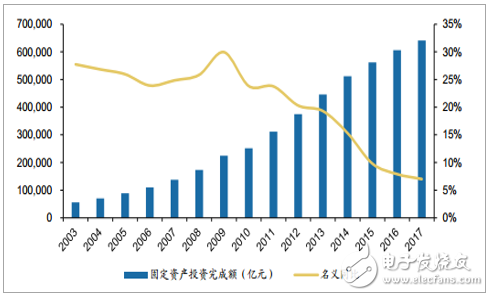
Source of data: public information
Specifically, the industries covered by the company's existing products include construction, power facilities construction, new energy power generation, communications, industrial control and other fields. These industries have increased their investment over the past decade with the development of China's economy. There are periodic changes, but the overall trend is good. In the future, China's economic construction will shift to high-quality development. The demand for upgrading and updating of existing equipment technology will be obvious, and the investment focus in various fields will also undergo different changes. With the acceleration of urbanization in China, real estate investment has been hot in the past decade. The compound growth rate from 2003 to 2016 reached 19.47%. Until the inventory demand in 2014 was obvious, the investment growth rate slowed down. In 2017, China's urbanization rate was 58.52%, an increase of 1.17 percentage points over the previous year. In 2020, China's urbanization rate will reach 60%. According to the National Population Development Plan (2016-2030) issued by the State Council in 2016, the cumulative transfer of rural to urban population is expected to reach 200 million in the next 15 years, clearly indicating that by 2020, about 100 million agricultural transfer populations and other permanent residents will be realized. The population settled in the town. In contrast, the urbanization rate of the world's major developed countries exceeds 75%. With the pressure of destocking since last year, there is still a large investment space for real estate in the future. In addition, in addition to the installation requirements of new buildings, the upgrading of existing low-voltage electrical appliances and intelligent upgrades will also bring certain demands.
China's real estate investment amount completed in the current year
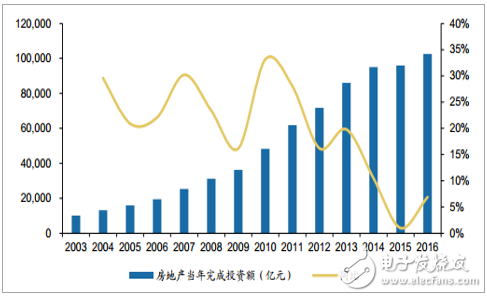
Source of data: public information
Low-voltage electrical appliances play an important role in the construction of electric power facilities, involving various aspects such as control and distribution of electric energy. The demand for power construction mainly comes from two aspects: on the one hand, new demand, and on the other hand, the update requirements of existing equipment. According to the empirical matching ratio calculation, each additional 10,000 kilowatts of power generation capacity requires about 60,000 pieces of low-voltage electrical components. In 2017, China's new power generation equipment with a capacity of more than 60 million kilowatts was 131 million kilowatts, and the total installed capacity reached 1.777 billion kilowatts. In 2017, the total electricity consumption of the whole society was 6.3 trillion kWh, a year-on-year growth rate of 6.55%. In the past ten years, the overall growth rate of electricity consumption in China's society was 6.87%. With the recovery of the economic environment, it is expected that this growth rate will be maintained in the future. . Stable power consumption will bring corresponding installation demand and bring incremental market to low-voltage electrical appliances. In terms of updating requirements, the renewal cycle of low-voltage electrical products is five to eight years, depending on factors such as product life, safety, stability, and specific requirements of some industries. Based on the installed capacity at the end of 2017, there are currently about 10.6 billion pieces of online low-voltage electrical appliances in China, and the demand for in-service products will bring a considerable and sustainable market. In addition, according to the Energy Bureau's “Networking Action Planâ€, the investment in construction and renovation of distribution network from 2015 to 2020 will be no less than 2 trillion yuan, and the construction of distribution network will also bring huge market space.
China's total social electricity consumption over the years

Source of data: public information
China's power generation grid-connected capacity over the years
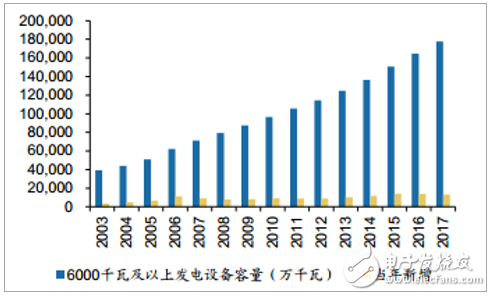
Source of data: public information finishing generator
The telecommunications industry is an important user of low-voltage electrical appliances and one of the most important application areas for medium and high-end products. It requires high stability and environmental adaptability. China is the country with the largest number of telecommunications users in the world. Over the years, the investment in fixed assets of the telecommunications industry has remained at a relatively high level. In 2016, China's telecom fixed assets investment was 435 billion yuan. From 2008 to 2016, the compound growth rate of investment was 4.96%. By the end of 2017, China had 2.19 million mobile base stations, of which 4.62 million were 3G/4G base stations, accounting for 75%. Since the popularization of 4G networks in 2013, new base stations have been dominated by 4G. In April 2018, China began to launch a 5G network pilot. It is expected that commercial operations will be realized from 2019 to 2020. During this period, the upgrade of existing base stations and the construction of 5G base stations will bring a considerable market for low-voltage electrical appliances. Products used in the construction of communication base stations are generally dominated by high-end products.
National Telecom Fixed Assets Investment
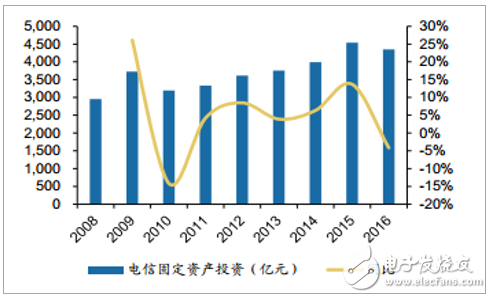
Source of data: public information
Number of mobile base stations nationwide
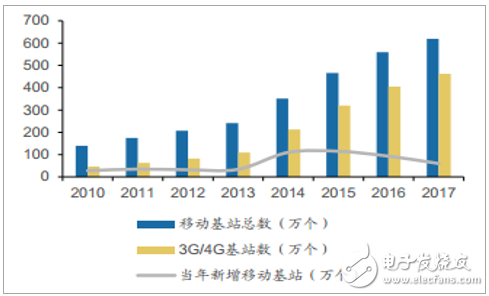
Source of data: public information
The industrial field is also an important application area for low-voltage electrical appliances. China has now become an industrial power. In 2017, the industrial added value reached 28 trillion yuan, a year-on-year increase of 6.4%. Since 2013, the compound growth rate has reached 12.27%. Industrial control is the main application field of medium and high-end low-voltage electrical appliances. Due to its high precision and high reliability requirements, it is currently a short-board that is common in Chinese enterprises. The market is mainly occupied by foreign brands. According to the "Made in China 2025" strategic plan, by 2025, China will strive to reach the level of manufacturing power. At that time, the automation level of China's industrial manufacturing will be greatly improved compared with the present, and the improvement of the localization rate of automation equipment is also an inevitable trend. The huge industrial control market will bring opportunities for the development of Chinese enterprises.
China's industrial added value over the years
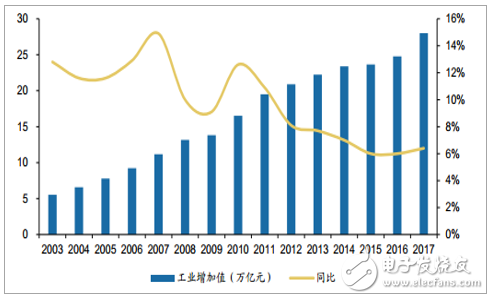
Source of data: public information
The global environmental problems brought about by the non-renewable, high-pollution and high-emission of fossil energy have become increasingly prominent. The characteristics of new energy green, pollution-free and renewable have gradually emerged. The implementation of clean alternatives and electric energy substitution is the key and trend to promote energy structure transformation and achieve sustainable energy development. At the same time, the National Development and Reform Commission plans that the proportion of non-fossil energy in the country's primary energy consumption will reach 15% and 20% respectively by 2020 and 2030, and the new energy replacement process will be significantly accelerated. In terms of wind power installed capacity, the newly installed capacity of wind power in China has grown steadily, from 6.25GW in 2008 to 30.75GW in 2015, with a compound annual growth rate of 25.56%. In 2016, due to the increase in abandoned wind rate, the installed capacity of new wind power was only 23.37GW. In 2017, with the completion of the construction of UHV transmission channels and the market mechanism of the country in promoting new energy consumption, the wind curtailment continued to improve: In 2017, the national wind power grid added 15.03GW, accumulating wind power The net capacity reached 164GW, and the abandoned wind power was 41.9 billion kWh, a year-on-year decrease of 7.8 billion kWh. The wind curtailment rate decreased by 5.2% year-on-year, achieving a “double down†of abandoned wind power and abandoned wind rate. The improvement of wind curtailment has enabled the profitability and cash flow of wind farm operators to continue to improve, and the enthusiasm for wind power investment has been effectively restored. In the future, with the establishment of the spot market for electricity trading and the multiple factors of onshore distributed wind power and offshore wind power installation, wind power installed capacity is expected to continue to grow.
In terms of photovoltaic installations, the rapid reduction of PV module costs has driven the high growth of PV installations. In 2011, the component price exceeded 12 yuan/W, and the price of components in 2017 was about 3 yuan/W, a significant drop. In addition, the country is also continuing to reduce the price of photovoltaic feed-in tariffs, and enterprises are actively pursuing "preemptive loading" in order to obtain higher electricity prices. In 2017, the installed capacity of new photovoltaic power generation in the country was 53.06 million kilowatts, a year-on-year increase of 53.6%; the national photovoltaic power generation capacity was 118.12 billion kilowatt hours, an increase of 78.6% year-on-year.
New installed capacity of wind power
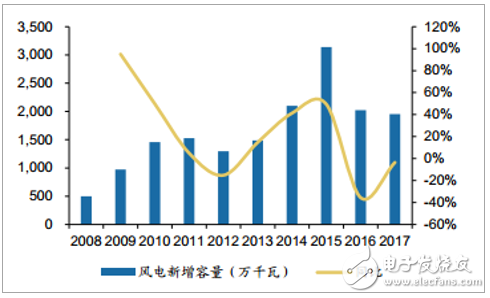
Source of data: public information
PV installed capacity
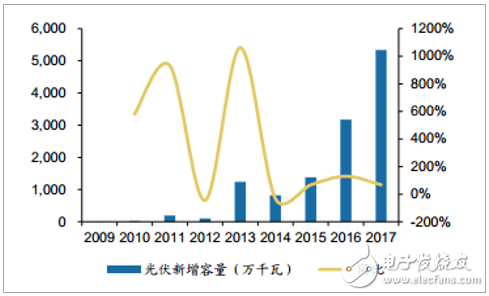
Source of data: public information
Low-voltage electrical appliances are an important part of new energy power generation and grid-connected equipment. Photovoltaic combiner boxes, photovoltaic grid-connected inverters, box-type transformers, and converters and box-type transformers in wind power systems all have large The demand for low-voltage electrical appliances.
Main applications of low-voltage electrical appliances in new energy power generation systems
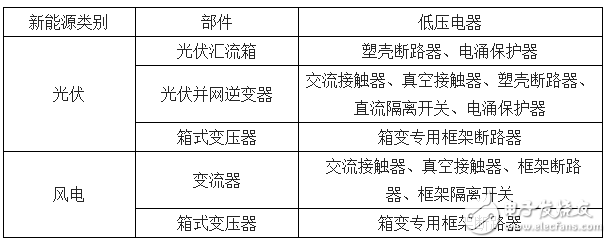
Source of data: public information
1-Piece Fir Tree Cable Tie,Oval Mount Cable Tie,Oval Mount Zip Tie,Oval Head Cable Tie
Wenzhou Langrun Electric Co.,Ltd , https://www.langrunele.com